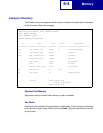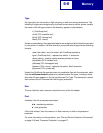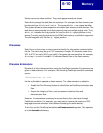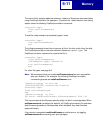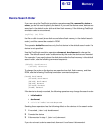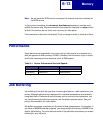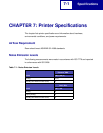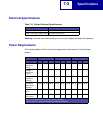
Memory
6-10
Device names are case sensitive. They must appear exactly as shown.
Each device (except the disk) has one synonym. For example, the flash memory can
be referred to as
%flash% or %flash1%. The name with the 1 is a unique identifier.
This system allows for future expansion of multiple flash memory or disk devices. The
disk device name provides for multiple physical units and multiple logical units. Thus,
%disk1_0% indicates the first physical unit and the first (0) logical partition on the
device. Currently, one physical device (for ROM, flash memory, and disk) is supported.
The disk supports only the first
(0) logical partition.
Filenames
Each file on a device has a unique name to identify the information contained within
the file. The name may be up to 127 characters in length. All character codes from
X'01' to X'FF' are valid (X'00' is not valid). Filenames are case sensitive: for example,
%flash%myfile and %flash%MYFILE indicate different files on the flash memory.
Filename Extensions
By default, all files referenced when using the PostScript emulation file operators are
given a .data extension. For example, if the following PostScript emulation command
occurs,
(%flash%myfile) (w) file
the file myfile.data is opened on flash memory. The .data extension is added to:
• Enable the Print Directory feature to identify files as PostScript emulation data
files.
• Ensure the integrity of files, such as resource collection files and
demonstration files.
However, it is sometimes necessary to access files by their real name through
PostScript emulation. For example, you may want to remove old versions of PCL
language resource collection fonts (without formatting the entire device).
To do this, use the PostScript emulation setfilenameextend operator. This operator
is in the statusdict dictionary.





